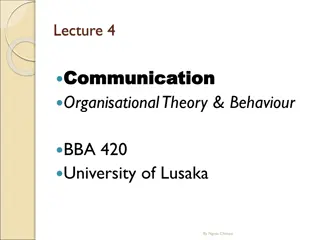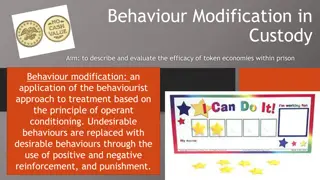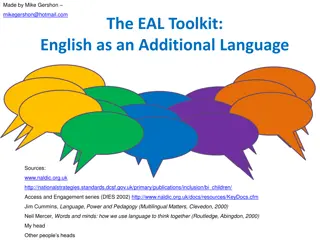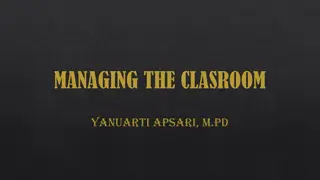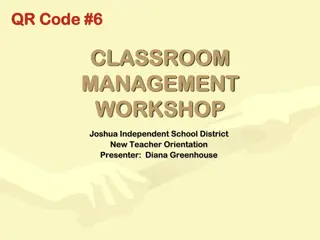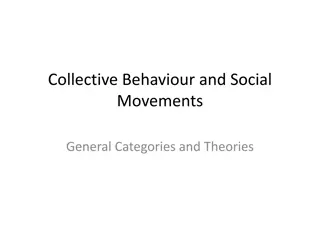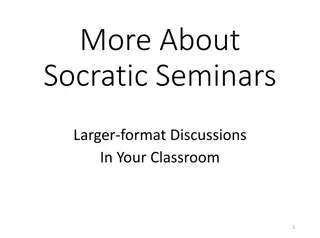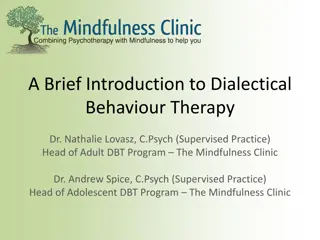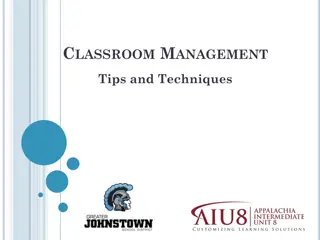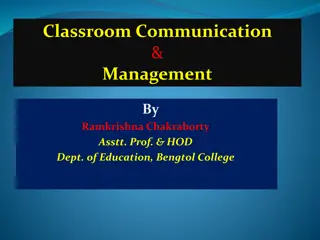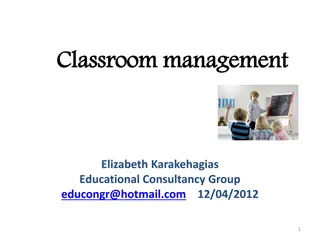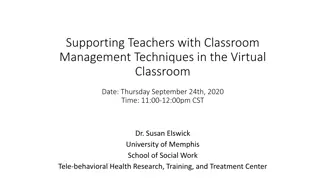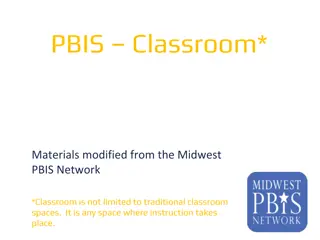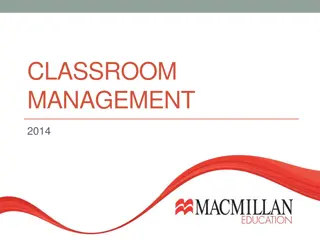Effective Strategies for Behaviour Management in the Classroom
New teachers often face challenges in behaviour management, which can impact the learning environment. Strategies such as setting the scene, identifying and addressing root problems, utilizing communication effectively, maintaining consistency, and using positive reinforcement play crucial roles in fostering a harmonious classroom atmosphere. Confidence-building, clarity of communication, and implementing Cowley's Seven C's of Behaviour Management are key components highlighted in this resource for aspiring educators.
Download Presentation

Please find below an Image/Link to download the presentation.
The content on the website is provided AS IS for your information and personal use only. It may not be sold, licensed, or shared on other websites without obtaining consent from the author.If you encounter any issues during the download, it is possible that the publisher has removed the file from their server.
You are allowed to download the files provided on this website for personal or commercial use, subject to the condition that they are used lawfully. All files are the property of their respective owners.
The content on the website is provided AS IS for your information and personal use only. It may not be sold, licensed, or shared on other websites without obtaining consent from the author.
E N D
Presentation Transcript
Behaviour Management Geoff Petty Sue Cowley
Behaviour can become a concern As NQTs we are not always taught explicitly how to do certain things Writing on the whiteboard is harder than it seems! CPD is YOUR responsibility Some things are left to our own discretion Behaviour management is subject to your own prerogative
Set the scene How you exhibit yourself is crucial to the students Setting the scene in the first 5 minutes is the most vital part of the lesson An introduction can help build rapport
Firefighting! Petty (1993, p110)argues that 1-find the REAL problem 2-agree a solution 3-set a target 4-follow up with an evaluation nip it in the bud -preventative action
Cowleys Seven Cs of Behaviour Management Cowley, S. (2006) Getting the Buggers to Behave. London: Continuum. Engage students with the seven C s to administer acceptable behaviour and create harmony within the classroom
Seven Cs(not seas) Communication Confidence Carrots and consequences Consistency Control Choice creativity
Communication Clarity of communication is key (alliteration also helps) Teaching is essentially the art of communication -Cowley 2012 Best way to reach all students? Using appropriate terminology Good communication is about reciprocity
confidence NQTs are not the most confident A difficult class erodes confidence? Create an aura of confidence Positive body language Faith in your own abilities
Carrots and consequences (medal and mission) Intrinsic and extrinsic motivation the motorway effect -drawing boundaries the marshmallow effect -incentives
Consistency Consistent behaviour breeds uniformity Aim to treat everyone the same equality
Control The teacher is in control of the classroom this it NOT a democracy If the teacher is not in control difficult students can? Keep calm! Control space and layout
Choice Difficult/disruptive behaviour is a CHOICE Encourage students to make the right choices Be clear about what options the students have available to them language of choice -give the student a choice with appropriate threat
Creativity Differentiation adds character to the lesson Engage different learning styles (visual, auditory, kinaesthetic) Engage different theories of teaching (humanist, behaviourist) Take chances, and attempt different techniques, take risks
references Cowley, S (2012) The Seven C's of Positive Behaviour Management (The Alphabet Sevens Series) Online Resource at Suecowley.co.uk Cowley, S. (2006) Getting the Buggers to Behave. London: Continuum. Duckworth,V Wood, J Dickinson, J Bostock, J (2010) Successful Teaching Practice in the Lifelong Learning Sector. Exeter:Learning Matters Petty, G. 2009. Teaching Today, A Practical Guide. 4th ed. Cheltenham: Nelson Thornes.
Further Reading Wallace, S (2001) Teaching and Supporting Learning in Further Education (3rded). Exeter:Learning Matters-p73 Mr Bonnycastle http://www.classroom-expert.com/the-7-cs- of-positive-behaviour-management/


